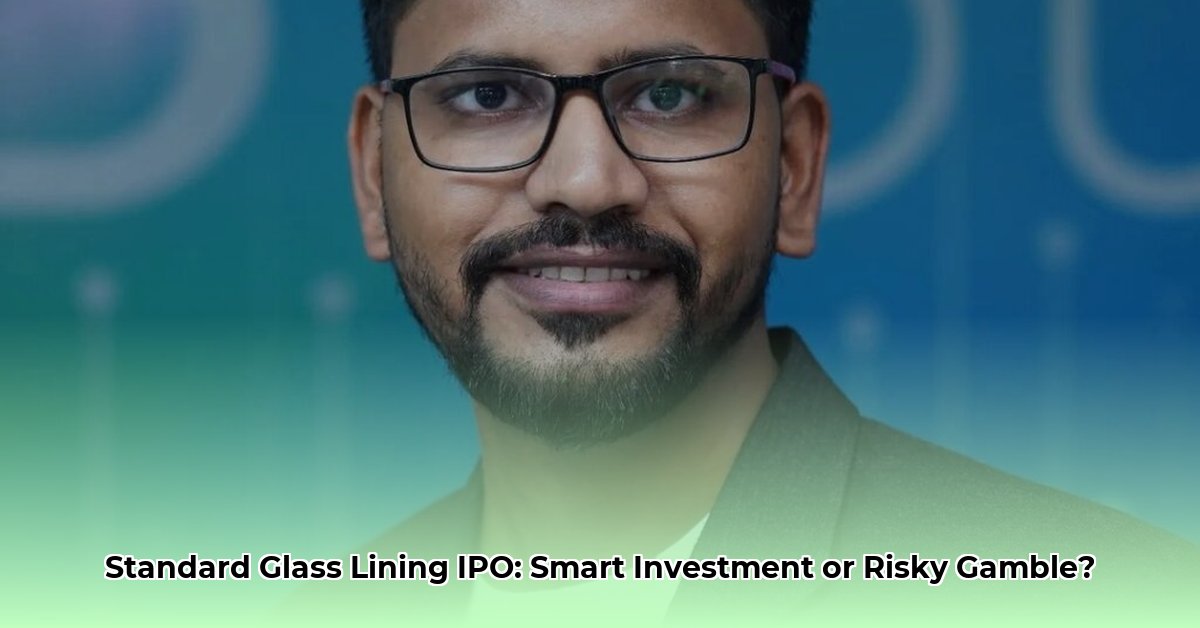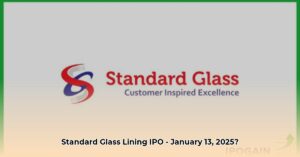This article provides a data-driven analysis of the Standard Glass Lining IPO of 2025, examining its performance and offering insights for potential future investments in similar companies. We’ll cover the company’s background, the IPO details, financial performance, valuation, and the potential upsides and downsides for investors. Finally, we’ll delve into the company’s post-IPO journey, comparing initial projections with actual results.
Company Profile: Inside the World of Glass-Lined Equipment
Standard Glass Lining Technology Limited, founded in 1995, manufactures specialized glass-lined equipment crucial for the pharmaceutical, specialty chemical, and agrochemical industries. These aren’t your average kitchen pots and pans; we’re talking high-tech reactors and vessels designed to withstand harsh chemicals and extreme temperatures. Their primary manufacturing facility is located in Gujarat, India, and the company serves both domestic and international markets. This global reach played a significant role in the investment narrative surrounding the Standard Glass Lining IPO.
IPO Overview: Dissecting the Offering
The Standard Glass Lining IPO opened on January 6, 2025, and closed on January 8, 2025. Shares were offered at a price band of ₹133 to ₹140, with a face value of ₹10. Investors could purchase shares in lots of 107 and multiples thereof. The company aimed to raise a substantial ₹410 crore (approximately $50 million USD at the time), divided between a fresh issue of ₹210 crore and an offer for sale of ₹200 crore from existing shareholders. The shares were listed on both the Bombay Stock Exchange (BSE) and the National Stock Exchange of India (NSE), providing accessibility for a wide range of investors. The stated objectives of the IPO included upgrading machinery, expanding production capacity, and reducing existing debt. These goals, if achieved, could have significantly impacted the company’s future growth trajectory.
| IPO Detail | Information |
|---|---|
| Opening Date | January 6, 2025 |
| Closing Date | January 8, 2025 |
| Price Band | ₹133 to ₹140 |
| Issue Size | ₹410 crore |
| Listing Exchange | BSE and NSE |
| Fresh Issue | ₹210 Crore |
| Offer for Sale | ₹200 Crore |
| Use of Proceeds | Capacity expansion, debt reduction, and new machinery |
Financial Health: A Closer Look at the Numbers
Standard Glass Lining’s FY24 financials, presented before the IPO, painted a generally positive picture:
| Financial Metric | FY24 Value |
|---|---|
| Revenue | ₹549.68 cr |
| PAT | ₹60 cr |
| EPS | ₹3.52 |
| RoNW | 20.74% |
| Debt-to-Equity | 0.32 |
| EBITDA Margin | 18.36% |
| PAT Margin | 10.92% |
These figures suggested healthy revenue generation and profitability. The relatively low debt-to-equity ratio indicated prudent financial management. However, these numbers represent a snapshot in time. The crucial question for investors was whether this performance was sustainable and likely to improve post-IPO.
Valuation: Determining a Fair Price
The IPO priced the company at a P/E ratio of 39.77x (based on the upper price band of ₹140 and FY24 earnings). This was lower than the industry average of 55.24x, potentially signaling an attractive valuation. However, a comparison with competitors revealed a mixed picture:
| Company | P/E Ratio |
|---|---|
| GMM Pfaudler | 30.6x |
| HLE Glascoat | 56.5x |
| Thermax | 81.2x |
While Standard Glass Lining’s valuation appeared competitive relative to the industry average, the lower P/E ratio compared to some competitors begged the question: was this indicative of undervaluation or were there underlying factors impacting market perception? This required a deeper dive into the company’s growth potential and risk profile.
Weighing the Potential: Pros and Cons
Potential Advantages:
- Market Growth: The demand for glass-lined equipment was projected to grow alongside the expansion of the pharmaceutical, chemical, and agrochemical industries.
- Financial Strength: The company’s FY24 financials pointed towards healthy profitability and a strong balance sheet.
- Competitive Valuation: The P/E ratio suggested a potentially attractive entry point for investors, especially when compared to the industry average.
- Export Expansion: Standard Glass Lining was actively pursuing growth in international markets, which could unlock significant future revenue streams.
- Strategic Investments: The planned use of IPO proceeds for capacity expansion, machinery upgrades, and debt reduction could further enhance the company’s competitive position.
Potential Disadvantages:
- Competitive Landscape: The glass-lined equipment market is characterized by intense competition, with established players like GMM Pfaudler and HLE Glascoat vying for market share.
- Sector Dependence: The company’s fortunes are closely tied to the performance of the pharmaceutical, chemical, and agrochemical industries, making it susceptible to cyclical downturns in these sectors.
- Operational Challenges: Manufacturing businesses like Standard Glass Lining face inherent operational risks, including potential production disruptions, supply chain bottlenecks, and fluctuating raw material costs.
- Export Market Volatility: Expanding into international markets carries risks related to exchange rate fluctuations, geopolitical uncertainties, and evolving trade policies.
Post-IPO Performance: The Real Story Unfolds
While the pre-IPO analysis offered a glimpse into the company’s potential, the real test came after the IPO. Examining the company’s post-IPO performance is crucial for understanding the investment’s true outcome. Did the stock price perform as expected? Did the company deliver on its growth projections? Did the investments funded by the IPO yield the intended returns? Answering these questions requires analyzing the company’s financial reports, market share trends, and overall strategic execution post-IPO. This retrospective analysis provides valuable insights for investors and offers crucial lessons for evaluating future IPO opportunities.
[!NOTE]
This article provides information and analysis for educational purposes and should not be considered financial advice. Always conduct your own thorough research and consult with a qualified financial advisor before making any investment decisions.



